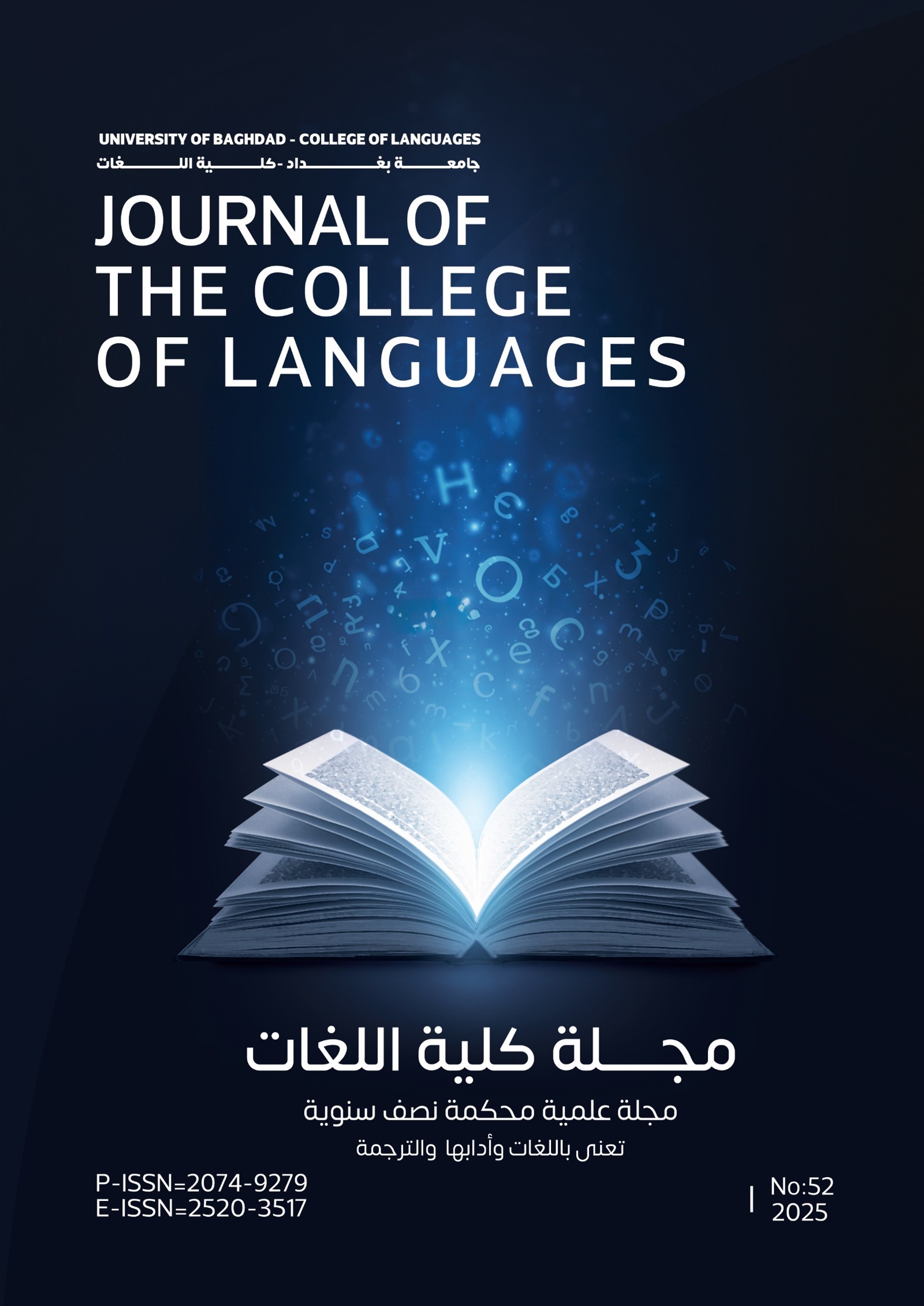A Pragmatic Analysis of the Use of Intensifiers in Charles Dickens’ Hard Times
DOI:
https://doi.org/10.36586/jcl.2.2019.0.40.0089Keywords:
intensifiers, pragma-stylistics devices, Hard Times, aesthetic function.Abstract
The present study investigates the use of intensifiers as linguisticdevices employed by Charles Dickens in Hard Times. For ease of analysis, the data are obtained by a rigorous observation of spontaneously occurring intensifiers in the text. The study aims at exploring the pragmatic functions and aesthetic impact of using intensifiers in Hard Times.The current study is mainly descriptive analytical and is based on analyzing and interpreting the use of intensifiers in terms ofHolmes (1984) andCacchiani’smodel (2009). From the findings, the novelist overuses intensifiers to the extent that 280 intensifiers are used in the text. These intensifiers(218) are undistinguished emotions constituting 78%,(38)are personalforming 13.5% and (24) intensifiers are specific emotions comprising 8.5%.Also, the analysis shows that 56 different intensifiers are employed in the text with great variety in frequency in the most frequent intensifier is ‘very’, used 90 times, followed by ‘so’, 82 times, and then ‘too’, 15 times as well as other intensifiers such as only, highly, eminently, quite, pretty, most, much and perfectly. The rest of the intensifiers are scarcely used. The study significantly concludes that the use of intensifiers helps contribute to typifying the downside and suffering of people in the Victorian era as such use moves the plot forward so as to discern the way social, economic and political circumstances affect the way the novelist uses intensifiers.This stems from the observation that the very low ratio of personal intensifiers13.5% reflects little subjectivity, if any, and goes in line with the main theme of the novel which is “the people in the Victorian era are like machines without human feelings.” The use ofintensifiers assists in unraveling of the interpretation of Dickens’ feelings, impressions, emotions and attitudestowards the Victorian society and makes the later apt to be criticized.
( Received on 16/9/2018 - Accepted on 31/12/2018 - Published on 2/6/2019 )









